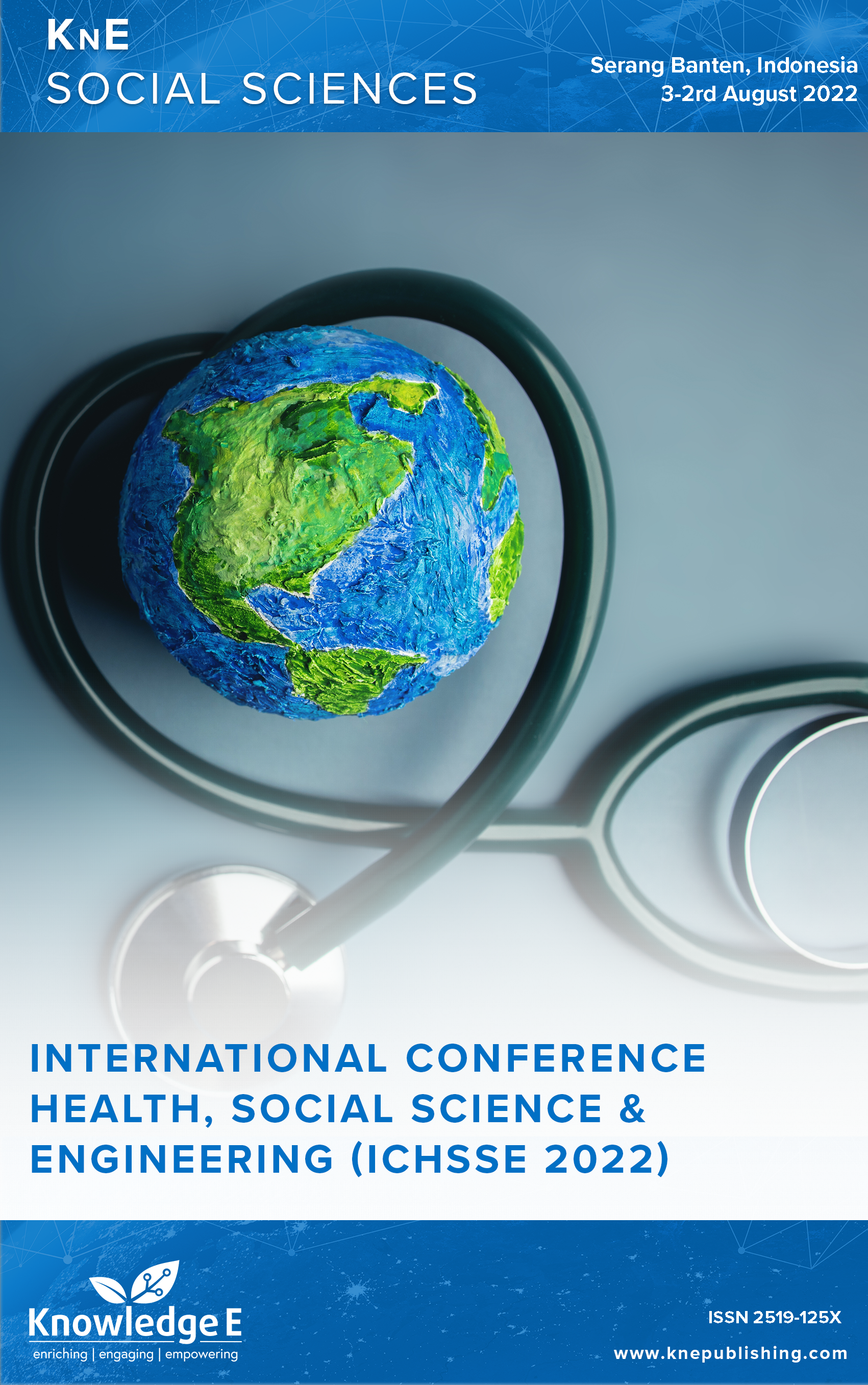Technological Advances and Evolution of Biowarfare: A Threat to Public Health and Security
DOI:
https://doi.org/10.18502/kss.v8i14.13853Abstract
Research in public health and medical sciences has always placed a high priority in managing disease outbreaks, effective treatment capacities, and overall human health and wellbeing. Despite the fact that advances in biology, biotechnology, and medical research have proven to have sufficient value in terms of lifesaving treatments, these have also presented major challenges in their effective utilization. Hence, potentially posing serious risks in the form of bioweapons, thereby, endangering governance frameworks that prioritize biosecurity and counter-biological warfare. In this review paper, a thorough literature review has been conducted to explore the critical aspects between advances in biology and their potential misuse, which could result in serious risks to public health and security. The history of biowarfare has been studied, and the results identify major criteria that have been used in deeming a biological agent fit for the use in mass destruction programs. Five historical biological warfare agents (Bacillus anthracis, smallpox, Yersinia pestis, Vibrio cholerae, and Francisella tularensis) have been studied critically to conclude that not all biological agents may act as bioweapons, but only those agents meeting these criteria may cause catastrophic damage. This paper examines key risks associated with bioweaponry posed by the convergence of biotechnology and artificial intelligence as evident in today’s world of innovation. Based on the situational analysis of the COVID-19 pandemic, the author also discusses some of the major shortcomings of the international framework and the healthcare system in handling future biological attacks having the potential of mass destruction. Through this paper, associations between different stakeholders, scientific communities, and research groups are highly recommended along with identifying the problem at its roots.
Keywords: bioweapons, biological toxin, biotechnology, artificial intelligence
References
[2] Verma N. ”How to technology changes human life,” in Times of India, ed., 2021.
[3] Chen S, Guo L, Wang Z, Mao W, Ge Y, Ying X, et al. Current situation and progress toward the 2030 health-related Sustainable Development Goals in China: A systematic analysis. PLoS Med. 2019 Nov;16(11):e1002975.
[4] Beck V. ”Advances in life sciences and bioterrorism. Risks, perspectives and responsibilities,” (in eng), EMBO Rep. 2003 Jun;4(Suppl 1):S53-S56. https://doi.org/10.1038/sj.embor.embor853
[5] Foley M. “Genetically engineered bioweapons: A new breed of weapons for modern warfare.” Dartmouth Undergrad Journal of Science, vol. Appl Sci (Basel). 2013.
[6] Fernández CR. ”Eight diseases CRISPR technology could cure.” Accessed.
[7] Naik S. ”Biological weapons: The impact of new technologies,” CBW Magazine, vol. 12, no. 2, Cover Story, 2019.
[8] Bensch F. ”How emerging technologies increase the threat from biological weapons.” Accessed.
[9] News WI, editor. WION. 2020.
[10] W. H. Organization, ”Biological weapons- Overview.”
[11] Goel AK. Anthrax: A disease of biowarfare and public health importance. World J Clin Cases. 2015 Jan;3(1):20–33.
[12] van Aken J, Hammond E. ”Genetic engineering and biological weapons. New technologies, desires and threats from biological research,” (in eng), EMBO Rep. 2003 Jun;4( Suppl 1):S57-S60. https://doi.org/10.1038/sj.embor.embor860
[13] Hooker E. ”Biological Warfare.”
[14] Zilinskas RA. Iraq’s biological weapons. The past as future? JAMA. 1997 Aug;278(5):418–424.
[15] NPR. ”The anthrax investigation,” in ”Special Series,” 2011.
[16] Charlet K. ”The new killer pathogens: Countering the coming bioweapons threat.”
[17] Newman T. Bioterrorism: Should we be worried? Medical News Today; 2018.
[18] Senior NJ, Sasidharan K, Saint RJ, Scott AE, Sarkar-Tyson M, Ireland PM, et al. An integrated computational-experimental approach reveals Yersinia pestis genes essential across a narrow or a broad range of environmental conditions. BMC Microbiol. 2017 Jul;17(1):163.
[19] Perry RD, Fetherston JD. Yersinia pestis—etiologic agent of plague. Clin Microbiol Rev. 1997 Jan;10(1):35–66.
[20] Riedel S. Biological warfare and bioterrorism: a historical review. Proc Bayl Univ Med Cent. 2004 Oct;17(4):400–406.
[21] J. H. C. f. P. H. Preparedness.
[22] O’Brien JT, Nelson C. Assessing the risks posed by the convergence of artificial intelligence and biotechnology. Health Secur. 2020;18(3):219–227.
[23] Aryan J. ”A look at China’s biowarfare ambitions,” Expert Speak.
[24] Ryan JR. Legal aspects of biosecurity. Biosecur Bioterror. 2016;243–261.
[25] Gronvall GK. Prevention of the development or use of biological weapons. Health Secur. 2017;15(1):36–37.
[26] Naik S, Ramanathan A, Naik S, Ramanathan A. The new bioweapons peril a case to revisit the biological weapons convention. Indian Public Policy Review. 2022;3(1):59– 76.
[27] Apps P. ”Commentary: The next super weapon could be biological,” Commentry.
[28] Alisha Anand PA; Security and Technology Programme, UNIDIR. Life Sciences, International Security and Disarmament Conference Report. 2020 innovations Dialogue. United Nations Institute of Disarmament Research; 2020.
[29] Shwartz M. ”Biological warfare: An emerging threat in the 21st century,” ed.: Standford News Service, 2001.
[30] O. f. w. a. feed, ”Is coronavirus a leaked biological weapon? Scientists don’t think so,” in Mint, ed, 2020.
[31] Andersen KG, Rambaut A, Lipkin WI, Holmes EC, Garry RF. ”The proximal origin of SARS-CoV-2.” Nat Med. 2020 April 01;26(4):450-452. https://doi.org/10.1038/s41591- 020-0820-9
[32] Lambert H, Gupte J, Fletcher H, Hammond L, Lowe N, Pelling M, et al. COVID-19 as a global challenge: Towards an inclusive and sustainable future. Lancet Planet Health. 2020 Aug;4(8):e312–e314.
[33] ”Biological Weapons Convention (BTWC) Convention on the Prohibition of the Development, Production and Stockpiling of Bacteriological (Biological) and Toxin Weapons (BTWC),” Biological Multilateral.
[34] Samore G. ”Bioweapons research is banned by an international treaty – but nobody is checking for violations,” International Affairs, Research.
[35] Gerstein D. Could the bioweapons treaty be another tool for addressing pandemics? Bull At Sci. 2021.

